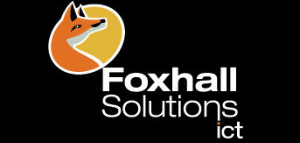A potential supplier is called, and the phone rings and rings – and the call isn’t answered! Do they ring again? – or do they try a different company? If you are that supplier, you know how important it is to keep your customer relationships, reduce that ring-time and to answer every call that comes to you …
The ‘traditional’ switchboard or PBX system had an Operator or Receptionist acting as the ‘gate-keeper’, answering all calls, and passing them on to the appropriate person or department – or in some cases, screening & blocking the call completely! However, businesses today are changing the role of the Receptionist, and using technology to ensure that calls still get through to the right person or department, even when the Receptionist is already handling a call, having a break, or greeting visitors. This is good news for the Receptionist as they are no longer ‘chained to their chair’, and can take a wider role and responsibility in your business.
You might think that we’d tell you that you need an Auto-Attendant to front-end your phone system (press button 1 for Sales, button 2 for Accounts etc.), but in most cases, this is not necessary. A much simpler mechanism is to have incoming calls sent to a ‘ring group’ consisting of several extensions where the call is presented to members of the group either sequentially (prioritised hunt), or simultaneously (ring all) so that whoever is free to take the call can do so. Where a Receptionist is employed, a common strategy is to have the incoming call ring for a short period at their desk, then forward on into a ring group where it can still be answered within a reasonable time.
Hunt groups are ideal if you have a hierarchy of knowledge, skills or expertise e.g. if you can’t get to Mary, then go on to Fred, then on to Linda. However, hunt-groups do introduce a delay in answering because the call has to ring & time-out at each extension before moving on to the next.
Ring-all groups are ideal where it is important that the call is answered quickly, and where anybody in that team has the knowledge and skills to handle the caller.
Ring groups are ‘fed’ by calls coming into your business on specific numbers and therefore, it is possible to have different types of ring-groups set up to match the needs of your callers. For example, somebody calling the accounts department may appreciate being connected with the FD first, or then their deputy as a fall-back. But, people calling your Sales department would appreciate being answered quickly by any of the sales staff able to take their order.
Foxhall’s 3CX & Yeastar phone systems provide the following to help your customers contact you:
- ‘Prioritised Hunt‘ groups to pass calls through a group of extensions one-by-one.
- ‘All Call‘ groups to simultaneously present a call to a group of extensions.
- Flexibility in deployment and use of Direct Dial Inward (DDI) numbers so that key people and departments can be dialed directly.
- Different call routing plans for in and out of hours service mean that the calls can be handled differently when the office is closed.
- Call routing can include mixtures of individuals and groups so that callers are answered through all kinds of ‘what-if’ scenarios.
- Call groups can be edited quickly and easily to put people in, or take people out – so that you can match your staff to your customers – even if staff changes are frequent.
- Call groups can present information to the phone displays, so that users know what departments or services have been dialed by the caller.
So, call groups are a very simple mechanism that can make it easy to ensure that your customers can get through to you quickly, in almost any circumstance, and talk to the people who are going to help them most efficiently. Contact us at Foxhall Solutions to talk about how Call Groups can help your business.

Recent Comments